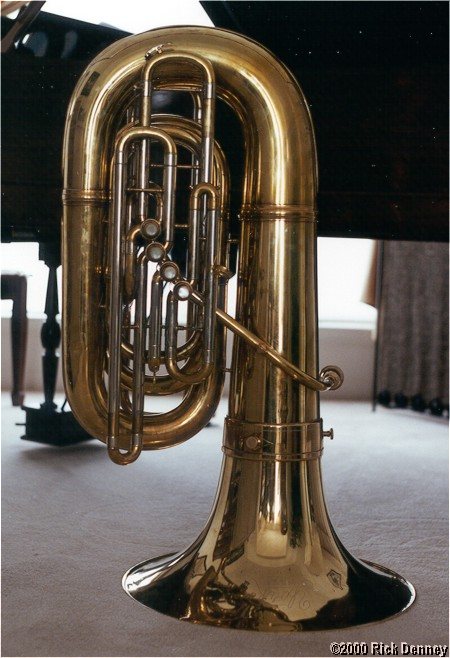
Posted by Rick Denney on May 27, 2003 at 12:25:08:
In Reply to: Postwar Yorks vs. "Vintage" Yorks? posted by Steven on May 26, 2003 at 12:26:34:

Does the image look like the image above? If so, it is a Boehm and Meinl-made instrument. Praise for these is not universal, though the fan club includes at least some well-known pros. I like the sound, but the intonation is work if you play in the extreme upper register (which I don't). As with Klaus, I get the best results from a large mouthpiece with a large backbore.
Are they desirable? You bet. I have a standing list of people interested in mine should I ever decide to sell it. But that doesn't mean they are perfect.
Construction quality is quite good, though without some of the detailing of high-end German instruments. Mine has better detailing than instruments of similar vintage I've seen from the same factory. For example, mine has nickel slide sleeves, but it doesn't have engraving or rolled edges of those sleeves. While there are York Master detractors out there, nobody, but nobody, complains about the valves, which I think are among the best made.
There is more on mine at the link.
Grand Rapids instruments following 1940 were intended for the student market. Carl Fischer had purchased the York factory in 1940, and the factory produced munitions during the war. The real master instrument designers, such as Bill Johnson, left the company at that time. Carl Fischer imported the B&M's so they would have a professional line to market, and it seems clear that B&M gamely tried to make instruments in the American design tradition. In the case of mine, they largely succeeded, though there is a strong German accent with mine that became more clear when I started playing the Holton.
Rick "who thinks it almost impossible to put a price on these--too much depends on the buyer, the seller, the specific instrument, and the timing" Denney